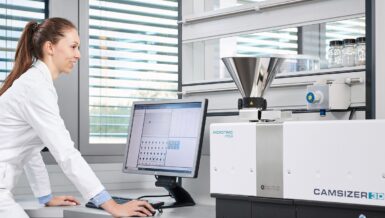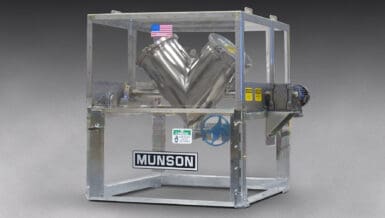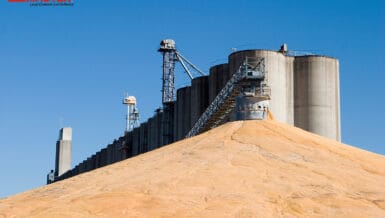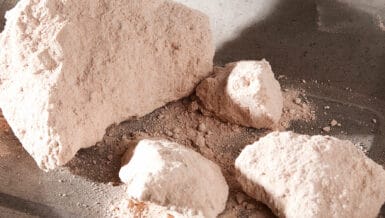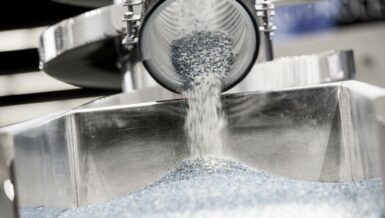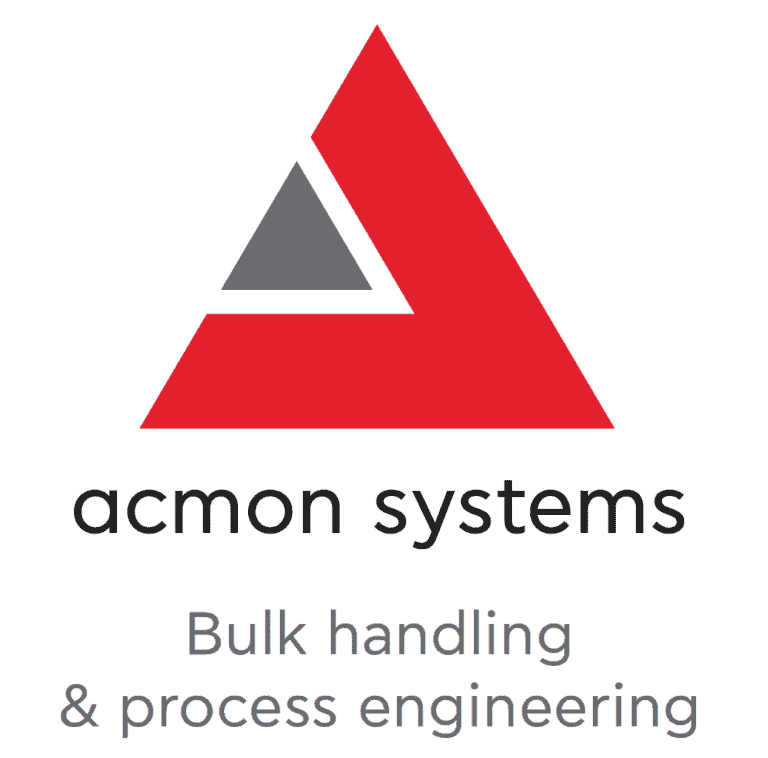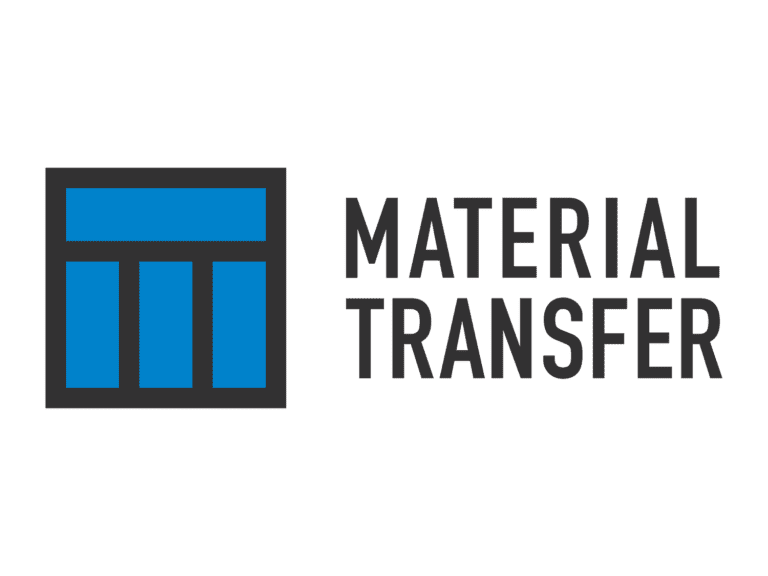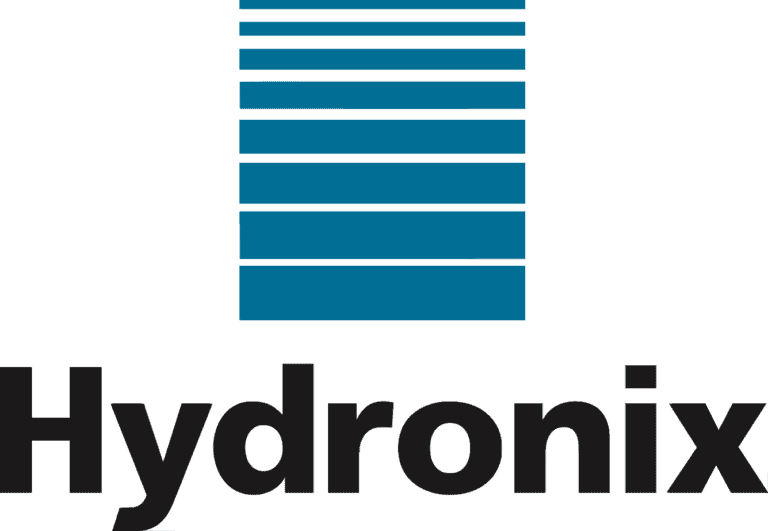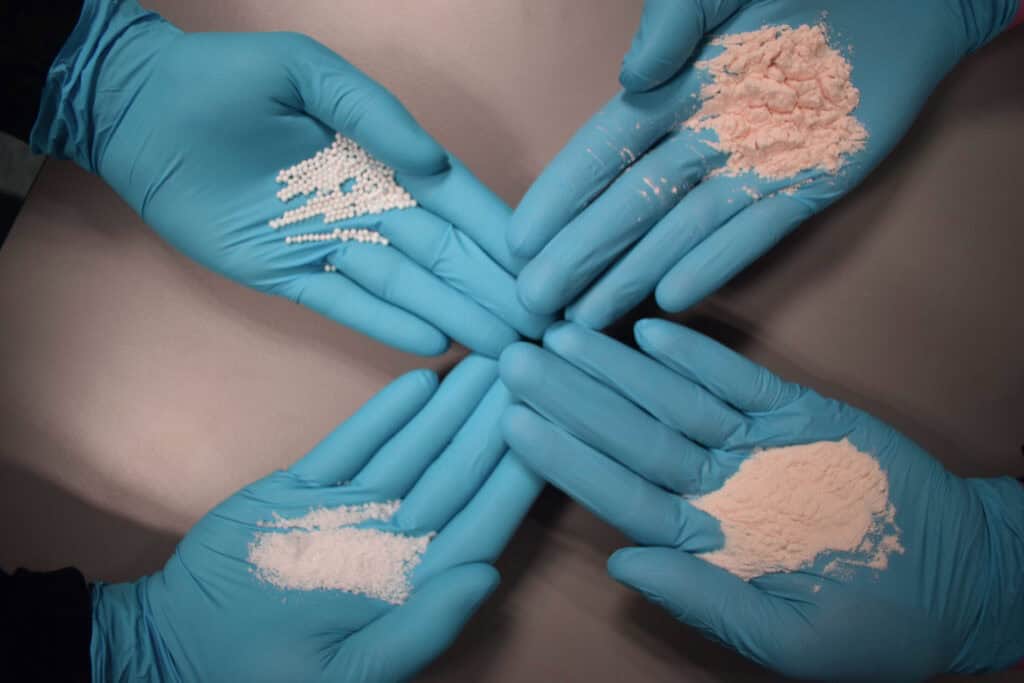During the compaction step, a fine, powdery raw material is continuously compressed between two counter-rotating rollers at a controlled compaction force to produce a solid ribbon of a higher density material. Next, the ribbon must be granulated in a size reduction step, which is usually carried out with a Rotor Fine Granulator (RFG) type of sieve mill to the target particle size. The sieving screen installed in the RFG controls the particle size. If needed, finer particles produced in the milling step can be screened off and recycled back into the roller compactor. This recycling process yields an even tighter control of the particle size and results in a dust-free material.

A powdery raw material is compressed into a ribbon, which is then milled in the RFG to produce a granule. There is an optional step of removing the fines from the material with the potential to recirculate the fines into the roller compactor feed hopper.
Increasing the applied compaction force will lead to an increase in the resulting bulk density of the produced granules. For most materials, the bulk density will increase significantly at low compaction forces. This increase often levels out at higher compaction forces. Changing from a small to a larger aperture screen in the rotor fine granulator will result in a respective increase of the maximum particle size of the granules.





